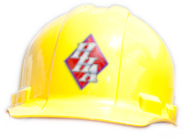Did you know that 65% of home energy use is consumed by water heaters and HVAC systems? With Earth Day right around the corner now’s the time to include HVAC maintenance in your spring cleaning schedule in order to keep those systems running efficiently. Check out some easy maintenance tasks you can do to keep your system running and avoid costly issues.
Spring HVAC Startup Checklist: Here are eight important things to check BEFORE switching the wall thermostat to cooling.
First, start with the outdoor HVAC unit:
1. Remove any condenser covers, coil blankets or lids: If you covered the outdoor coil in order to protect it during the winter months, be sure to remove the cover before starting the system. These covers protect and keep leaves out of your unit, but also limit air flow and any heat transfer. Starting the system with any of these covers in place, even for a short time, could severely damage your system. Many people forget to remove their covers every year, often resulting in major repairs or even replacement of the whole system.
2. Inspect the outdoor unit panels: These panels are designed to enclose the electrical connections and must be in place to help protect both you and your system. If you are missing a panel (possibly due to wind) or if the panel is misaligned, this could pose safety risks for both you and the safe operation of the equipment. If the panel covering the electrical connections is missing or out of place, you should call a qualified technician for an assessment before starting your system.
3. Remove any debris from the outdoor coil: Depending on where you live or what side of the house your system is located, you might find trash or vegetation blown into or against the coil. The system coils are designed to transfer heat; any debris limits this effect. To get the best possible performance from your system, remove this debris from the coil and surrounding area. If there is a lot of dust, pollen and debris in the coils you can usually wash this off with a garden hose, but be sure to keep the spray limited to the coil area and keep it away from any electrical panels. Also, while mulching in the spring, take care to not pack mulch around the base of the unit. This is especially true for heat pumps as there’s likely a space under the unit and this should always be kept open to allow good air flow to the outdoor unit.
4. Repair or replace any damaged pipe insulation: There are two refrigerant lines running from your outdoor unit to the indoor air handler – a small one and a larger one. The suction line is the larger copper pipe on the outdoor unit and this line brings the cool refrigerant back to the compressor in the outdoor unit. If the larger suction line has damaged insulation, this could cause a loss of cooling for the outdoor unit which could damage your system and may also cause energy use. Damage to the foam insulation can be caused by sun rot, freezing water trapped in the foam or winter animals looking for shelter or food. The insulation should be in place to maintain proper system cooling. If the insulation needs replacing, do so before starting the unit. Look on the copper pipe for a size (5/8, 3/4, 7/8, etc.) to determine the proper size for your replacement insulation. It might be possible to find the insulation at a local hardware store. When installing this insulation be careful not to bend or pull on either of the lines as this might cause the lines to crimp or to develop a crack which would result in refrigerant leak. (NOTE: ONLY the larger line needs insulation. The smaller copper line does not require insulation.)
In summary, a brief inspection of your system now could help keep your system running worry free through the heat of the summer and fall and is especially important for older systems. While performing this general inspection, take note of the overall system health in order to assess the likelihood of a problem. If your system is old and has endured an unusually harsh season, it might be time to call for help. A qualified technician can help you do a more thorough spring technical inspection to avoid a system failure in the hottest months of the year. The technician can also help address any concerns you have so let the contractor know what you found during your own spring inspection. Summer is just around the corner and no one knows your house better than you. If air conditioning is a necessity due to your lifestyle or geographical location, then be sure to get a professional’s opinion before time runs out.
Source credit http://www.ac-heatingconnect.com/homeowners/spring/



